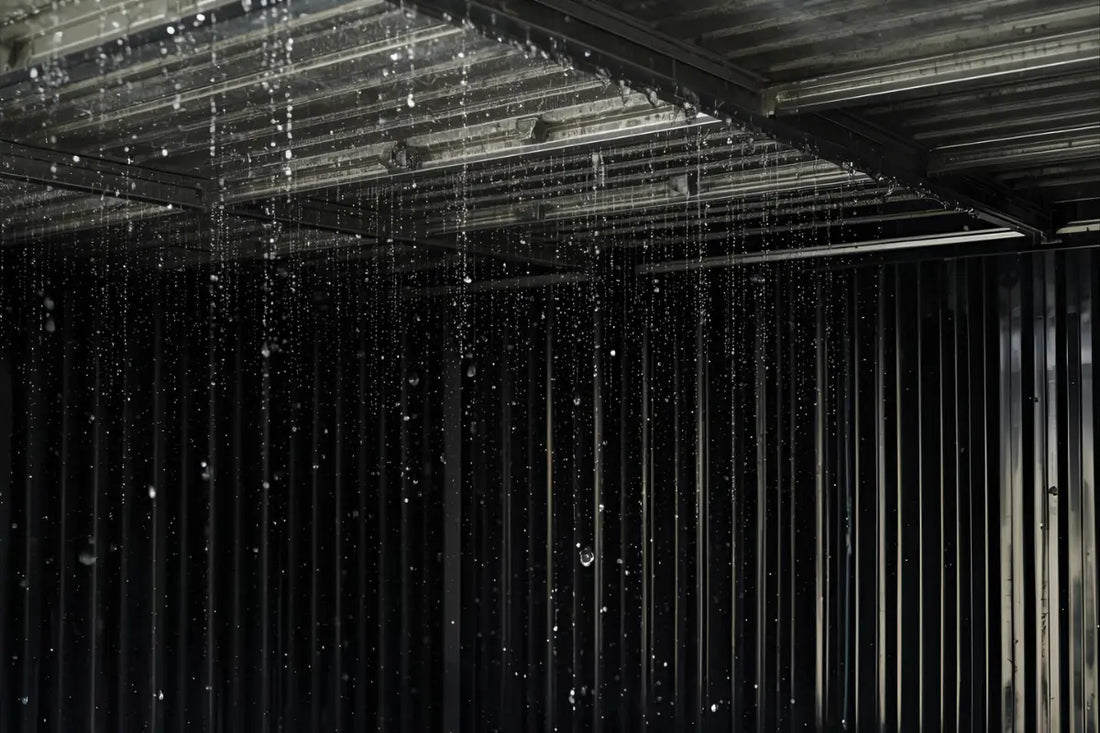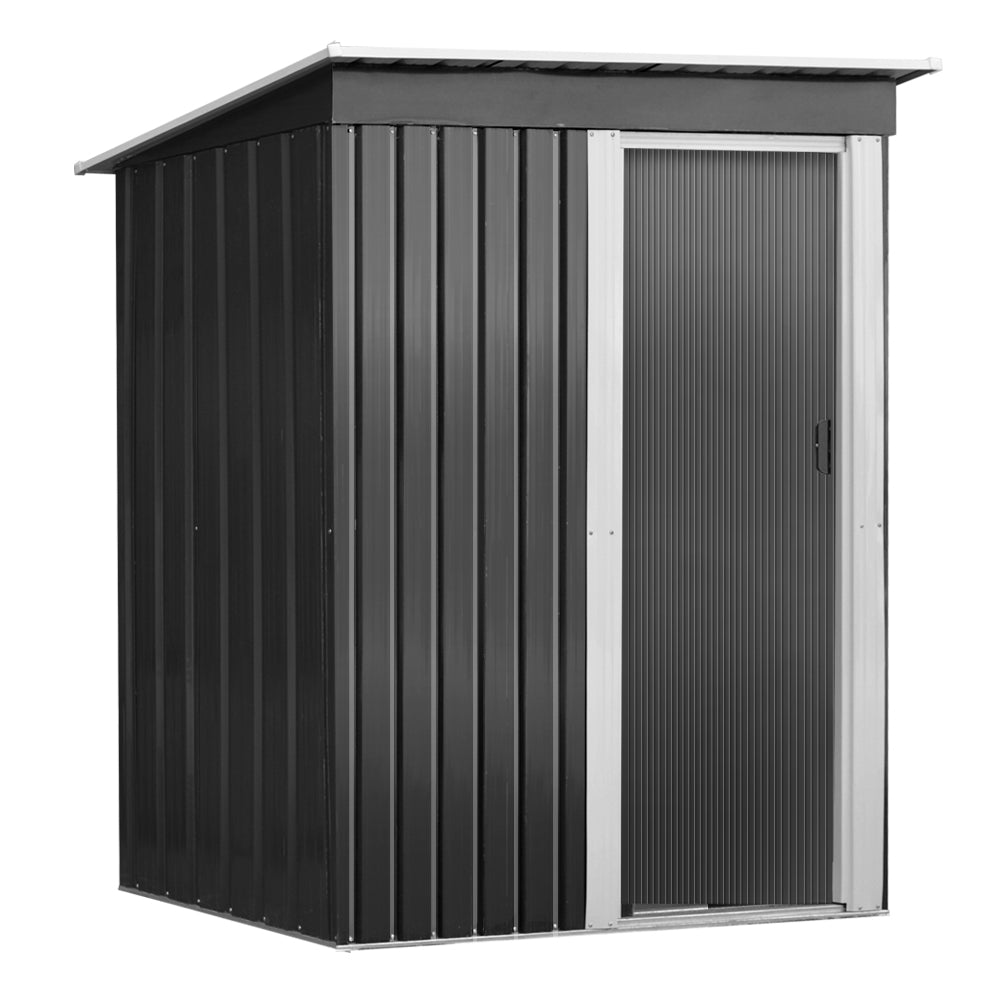
How to Stop Condensation in Your Shed: 7 Proven Solutions That Actually Work
There's nothing quite as frustrating as opening your shed door to find everything covered in moisture. Your tools are rusting, cardboard boxes are soggy, and that musty smell hits you straight away. If you've ever wondered why your shed sweats more than you do on a summer morning, you're not alone.
Condensation in sheds is one of the most common problems Australian homeowners face, especially during those shoulder seasons when overnight temperatures drop but daytime heat climbs. The good news? It's completely fixable, and you don't need to be a tradie to sort it out.
In this guide, we'll walk you through exactly why condensation happens in your shed and, more importantly, seven practical solutions that actually work. No fluff, no complicated jargon - just straightforward advice you can implement this weekend.
Why Does Condensation Form in Sheds?
Before we jump into solutions, let's quickly understand what's happening. Condensation occurs when warm, moisture-laden air comes into contact with a cold surface - like your shed's metal roof or walls.
Here's the simple version: During the day, your shed heats up. At night, the metal cools down rapidly (much faster than the air inside). When that warm air touches the cold metal, the moisture in the air turns into water droplets. It's the same reason your bathroom mirror fogs up after a hot shower.
Australian conditions make this worse because:
- Our temperature swings between day and night can be dramatic
- Coastal areas naturally have higher humidity
- Metal sheds (which most of us have) conduct temperature changes rapidly
- Many sheds lack proper ventilation
The result? A damp environment that's terrible for anything you're storing.
The Hidden Costs of Ignoring Shed Condensation
Before we dive into solutions, it's worth understanding why this isn't just a minor annoyance:
Rust and corrosion: Your tools, mower, and equipment will deteriorate faster than they should. That's money down the drain.
Mould and mildew: These love damp environments and can spread to anything fabric or cardboard you're storing. Plus, they're not great for your health.
Damaged belongings: From warped wood to ruined paperwork, moisture destroys. Those family photos or seasonal decorations you've boxed up? They're at risk.
Structural integrity: Over time, constant moisture can weaken your shed's structure and void warranties.
Now, let's get to the good stuff - how to fix it.
7 Proven Ways to Stop Condensation in Your Shed
1. Improve Ventilation (The Most Important Step)
This is your first line of defence. Many sheds, especially budget models, come with minimal ventilation. The goal is to create airflow that lets moisture escape before it condenses.
What to do:
- Install roof vents at opposite ends of your shed (this creates cross-ventilation)
- Add louvre vents or whirlybirds to the roof ridge
- Install air bricks or vent panels near the base of walls
- Keep existing vents clear - don't block them with storage
Pro tip: Position vents to take advantage of prevailing winds. In most of Australia, this means placing vents on north and south-facing walls or roof sections.
Quick win: Even just leaving your shed door slightly ajar on dry days can help, though this isn't always practical for security.
2. Insulate Your Shed
Insulation doesn't just keep your shed warmer in winter and cooler in summer - it prevents those rapid temperature changes that cause condensation.
Options that work:
- Bubble foil insulation (easy DIY install)
- Foam board insulation for walls and roof
- Insulated shed lining panels
- Reflective foil backed with foam
Why it works: Insulation acts as a barrier, slowing down the temperature change of your shed's internal surfaces. This means the metal doesn't get cold enough for condensation to form as easily.
Budget-friendly approach: Start with just the roof if you're on a tight budget. That's where most condensation forms anyway.
3. Use a Dehumidifier
For serious condensation problems, especially in humid coastal areas, a dehumidifier can be a game-changer.
Consider:
- Electric dehumidifiers for powered sheds (look for ones with continuous drainage)
- Rechargeable silica gel dehumidifiers for non-powered sheds
- Moisture traps with crystals (cheap but need regular replacement)
Real talk: Yes, running a dehumidifier costs money, but it's cheaper than replacing rusted tools or damaged belongings. Plus, modern units are quite energy-efficient.
4. Control Ground Moisture
Sometimes the problem isn't just in the air - it's coming from below.
Check these:
- Is your shed sitting directly on dirt? Moisture evaporates from the ground
- Do you have a proper concrete or paved base?
- Is rainwater pooling around your shed's foundation?
Solutions:
- Install a plastic moisture barrier (DPM) under your shed if you haven't already
- Ensure proper drainage around the shed base
- Use raised floor bearers to create an air gap
- Consider a concrete pad installation if you're dealing with persistent issues
5. Manage What You Store
What you keep in your shed can actually make condensation worse.
Avoid:
- Storing wet items (let them dry outside first)
- Keeping open containers of liquids
- Overloading your shed so air can't circulate
Do:
- Use sealed plastic storage containers instead of cardboard
- Elevate items off the floor with shelving
- Create gaps between stored items for airflow
- Wipe down wet tools before storing them
Smart tip: If you're storing garden chemicals or liquids, use sealed containers and place them on upper shelves where air circulates better.
6. Apply Anti-Condensation Paint or Coating
This is like giving your shed a protective shield against moisture.
How it works: Anti-condensation paint contains insulating particles that warm up quickly, preventing that critical temperature difference. The surface stays just warm enough that moisture doesn't condense.
Application tips:
- Best applied to the underside of your roof and internal walls
- Requires proper surface preparation (clean, dry, rust-free)
- Usually needs 2-3 coats for effectiveness
- Can be painted over with regular paint once cured
Is it worth it? If you've already got ventilation sorted and still have issues, absolutely. It's relatively inexpensive and lasts for years.
7. Position Your Shed Strategically
If you're yet to install your shed (or willing to relocate it), placement matters more than you'd think.
Ideal positioning:
- Face the door away from prevailing winds (reduces wind-blown rain getting in)
- Choose a spot with good natural drainage
- Avoid low-lying areas where cold air settles
- Consider morning sun exposure to help dry out overnight condensation
- Leave space around the shed for airflow
Already installed? You can still improve drainage and airflow around your existing shed location.
Combining Solutions for Maximum Impact
Here's the truth: one fix rarely solves everything. The most effective approach combines several solutions tailored to your specific situation.
For mild condensation: Start with improved ventilation + better storage practices. This handles most cases.
For moderate condensation: Add insulation to ventilation + dehumidifier for problem months. This covers most Australian conditions.
For severe condensation: Go all-in: ventilation + insulation + dehumidifier + ground moisture control. Worth it for valuable equipment or if you use your shed as a workshop.
Your Quick-Start Action Plan
Not sure where to begin? Follow this order:
Week 1: Assess your current ventilation and add vents if needed (biggest impact for least cost)
Week 2: Reorganise your storage to improve airflow and remove moisture sources
Week 3: Install insulation, starting with the roof
Ongoing: Monitor humidity levels and add a dehumidifier if needed
Frequently Asked Questions
Q: Will heating my shed stop condensation? Actually, heating can sometimes make it worse by increasing the temperature difference between inside and outside. The exception is if you maintain consistent heating 24/7, but that's expensive and usually unnecessary. Focus on ventilation and insulation first.
Q: How much ventilation does my shed need? A good rule of thumb is one vent for every 2-3 square metres of floor space. You want vents positioned high and low to create airflow.
Q: Is condensation worse in winter or summer? In Australia, it's typically worse during autumn and spring when you get warm days and cool nights. Coastal areas may experience issues year-round due to higher humidity.
Q: Can I use my shed as a workshop if it has condensation? You can, but you'll want to solve the moisture problem first. Condensation can damage power tools, create rust on metal surfaces, and make the space uncomfortable. Plus, damp environments and electrical equipment aren't a great mix.
Q: Do plastic sheds have condensation problems too? Yes, but usually less severe than metal sheds because plastic doesn't conduct temperature changes as quickly. They still need proper ventilation though.
Final Thoughts: A Dry Shed is a Happy Shed
Condensation doesn't have to be a fact of life with your shed. With the right combination of ventilation, insulation, and smart storage practices, you can create a dry, protected space that keeps your belongings safe for years to come.
Remember, you don't need to implement every solution at once. Start with the basics - ventilation and storage management - and build from there based on your results.
Your future self (and your tools) will thank you for taking action today rather than waiting until the damage is done.
Ready to upgrade your storage game? Browse our range of high-quality storage solutions designed to keep your belongings organised and protected, whether inside your home or in your shed. From weatherproof containers to clever shelving systems, we've got everything you need to store smarter.
Have you successfully tackled condensation in your shed? We'd love to hear what worked for you! Drop us a message or share your tips with other readers in the comments below.
Looking for the perfect storage solutions to keep your shed organised while managing moisture? Explore our carefully curated collection of weatherproof storage containers, shelving units, and organisation systems designed for Australian conditions.
Shop:
- Our variety of Small, Medium & Large sheds that differ based on your storing needs.
- Our large range of garage racking that can help you keep your items off the floor and have more air circulate around them.

